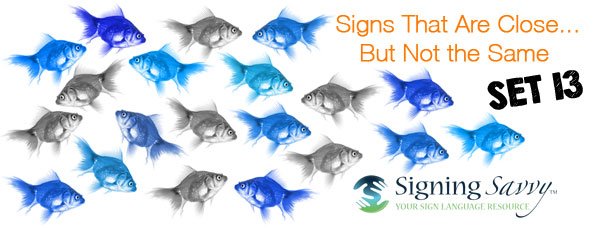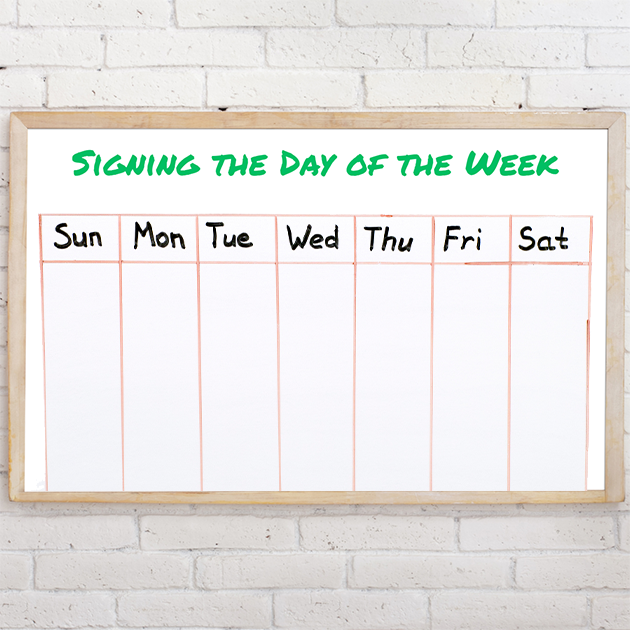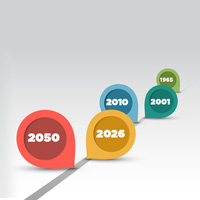
Signs That Are Close... But Not the Same - Set 13
This article is part of our “Signs That Are Close... But Not the Same” series, which highlights signs that look similar, but have different meanings.
The ASL signs shown below look similar, but are not the same. There are many ASL signs that when produced look similar, but in fact have a completely different meaning. Below you will find examples of such signs. Watch closely to see if you can see the differences. In addition, watch my eyebrows, look to see when I tilt my head or lean my body in a certain way, even what my mouth is doing. These nuances are called inflections and trust me, inflections matter.
1. Decide vs. Court
DECIDE and COURT look similar because they end with both hands in the F handshape moving downward. The glaring difference between DECIDE and COURT is that DECIDE starts with the dominant hand in the 1 handshape at the forehead. However, if you are in a conversation, it could be easy to miss this nuance as the signer transitions from one sign to the next. Paying close attention to the movement of the hands as they move downward will help you decipher between these two signs.
As DECIDE has both hands move downward together, you can think of setting down your thoughts when you make a decision.
You can remember COURT uses an alternating movement because the Judge in COURT has to weigh the options.
These signs use hands in the F handshape because they evolved from the French signs for JUGER (judge) and BALANCE (scales), which were originally described as "with the thumb and index of each hand, take the chains of the trays on a scale and with a light movement alternately raise and lower them."1
 |
2. Supervise vs. Take Care Of
SUPERVISE and TAKE CARE OF have both hands, with palms facing each other, in the V handshape together in front of the torso.
The use of the V handshapes when signing SUPERVISE suggests the eyes of someone watching over you and you can think of the circular movement as looking around or looking over them.
When signing TAKE CARE OF, the top, dominant hand taps on the bottom, non-dominant hand two times.
 |
3. Shoes vs. Advertise
SHOES and ADVERTISE both have the hands in the S handshape, with the palms down, and the hands meetup, tapping together two times. However, the orientation of your hands are different. When signing SHOES, your knuckles face forward, while your knuckles face the opposite side of your body when signing ADVERTISE.
The sign for SHOES may have evolved from initializing the French sign for CHAUSSURES (shoes), which is made by "clapping the two palms together, as if tapping shoes to remove dirt."1 However, I like to think of Dorothy’s shoes, in the Wizard of Oz, clicking together when signing shoes… "There’s no place like home, there’s no place like home."
When signing ADVERTISE, think of the hands as words or ideas that are being pushed on people through advertisements.
 |
4. Awkward vs. Walk Fast
AWKWARD and WALK / WALK FAST both use hands in the 3 handshape to mimic movement. The signs are similar because they both evolved from the French sign for PAYSAN (peasant), which was described in 1808 as showing "the slow and lazy walk of good country folk, their gross habits, badly cut and unkempt."1
AWKWARD moves in a circular motion and you can think of the movement as clumsy feet. WALK / WALK FAST alternates hands back and forth to represent a walking movement. The faster the hand movement is, the faster the walking is.
 |
5. Race vs. Game
Both hands come together in the 10 handshape to sign RACE and GAME. To remember the difference between these two signs, you can think about the sayings "neck and neck" versus "head to head."
When signing RACE, the two hands alternately twist back and forth. Think of each hand as a person in a race and the thumbs are their heads as one person races in front of the other, and then the other. Some people think of the movement as symbolizing two opponents "neck and neck" in a race.
When signing GAME, the two hands tap together at the knuckles two times, think of it as a going "head to head" when two opponents or teams play each other in a game.
 |
How can I figure out the difference between signs on my own?
If you see two signs that look close, but not the same, and you’re not sure, you may use Signing Savvy features to help you figure out the difference. All of our signs have sign descriptions and memory aids that members may access. Reading the sign description and memory aids for the signs will help you figure out the small differences between them that your eyes don’t catch at first. We also recommend using the pause and slow motion feature to slow down the video, so you may take a closer look. These features are available to Signing Savvy members.
Take a look, it's in a book!
These examples are aligned with the Visual Discrimination section of Lesson 7 (page 85) from Lessons and Activities in American Sign Language by Brenda E. Cartwright and Suellen J. Bahleda. Check out the book for more ASL Activities and watch for more examples from this series: “Signs That Are Close... But Not the Same.”
Resources
ADVERTISEMENTS
 Brenda Cartwright is a Coda, seasoned interpreter, a master teacher, well known presenter, and author of several best selling sign language and interpreting textbooks from the RID Press. For 35 years Brenda was the Chair of the Sign Language Interpreter Program at Lansing Community College in Lansing, Michigan.
Brenda Cartwright is a Coda, seasoned interpreter, a master teacher, well known presenter, and author of several best selling sign language and interpreting textbooks from the RID Press. For 35 years Brenda was the Chair of the Sign Language Interpreter Program at Lansing Community College in Lansing, Michigan.







Savvy User AnthonyThursday, December 17, 2020
Anthony Constantinou CEO CWM FX says, "One of the best feature Signing Savvy is the end of confusion when we get confused for two signs that look close, but not the same.